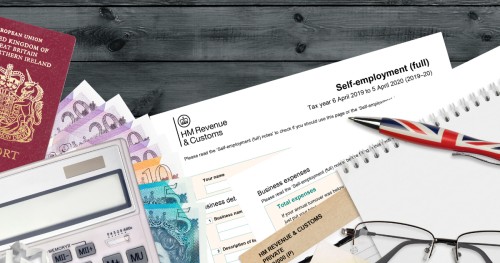How the new IR35 off-payroll rules affect freelancers

As many freelancers know by now, on April 6th 2021, new off-payroll working rules came into force in the private sector, writes Andy Hamman, employment tax director at tax, accounting and advisory firm Crowe UK.
These rules are often referred to as the IR35 rules. But what some self-employed people don’t always know is that the IR35 rules actually first came into effect in 2000. What is key for freelancers to understand about IR35 today, in 2021, is that the rules from April have significantly changed IR35, also known as the Intermediaries legislation.
What is IR35?
In simple terms, the IR35 rules attempt to prevent disguised employment where an individual works for an organisation, but is not strictly an employee because they are not directly contracted.
If the IR35 rules apply, the individual must be treated as an employee but only for tax purposes. This means that Income Tax and National Insurance Contributions (NICs) will be deducted at source and remitted to HMRC.
When do the IR35 rules apply?
The new IR35 rules (from April 6th 2021) will apply if all the following apply:
Setting the rules out in this way is simple, but actually applying them is a much more complex task! We will briefly explain each of these conditions.
What do these four conditions for an ‘inside IR35’ determination mean, in practice?
For the first condition (1), the individual must be performing services for a client and not providing services for another person. This can cause confusion over who the client is or who the individual is actually providing services for. Generally speaking, the client will be the party or person who is most akin to the individual’s employer.
The second condition (2) will depend on the type of entity the client is. In the vast majority of cases, the client will be a limited company. If this is the case, it will be ‘medium’ or ‘large’ in size if it meets at least two of the following criteria for two consecutive financial years:
- turnover of more than £10.2 million;
- a balance sheet total (assets) of more than £5.1 million;
- an average of more than 50 employees. ,
Thirdly (3), the individual cannot be contracted directly by the client. They must be contracted via an “intermediary.”
An intermediary can take a number of forms, but the most common will be a limited company that is owned by the individual – commonly referred to as a Personal Service Company (PSC). Broadly speaking, a company will be a PSC if the individual controls more than 5% of the company.
The last but definitely the most complex condition for IR35 to apply…
Fourthly (4) and finally, yet perhaps the most complex of the conditions, the individual must be working in such a way that they would be an employee of the client if contracted directly. This is not a choice.
This decision is based on normal employment status criteria, which is determined by a number of employment status “factors” developed over many decades by case law.
What are some IR35 status factors?
Some of the key factors are whether the individual can send someone else to perform the services in their place (‘Substitution’), whether the client has control over the work the individual carries out (‘Control’), whether the individual has any financial risk when carrying out the work (‘Financial Risk’), and whether the individual has other clients and a substantial business set up (‘In Business On One’s Own Account’).
Freelancers operating through their own limited company should keep in mind -- there is no broad-brush approach to determine whether someone is working like an employee or not. Instead, all relevant factors must be considered in the round – a subjective process.
How can clients decide their off-payroll workers’ IR35 status?
To help organisations decide this (the key change in the IR35 rules is that the individual loses the ability to decide their status – it instead falls to the client to decide), HMRC has developed an online tool.
The tool is called Check Employment Status for Tax tool (‘CEST’). As we told ContractorUK yesterday, in our view, CEST is useful, but it certainly has its limitations, including not incorporating all relevant factors that it should. And it can sometimes return an ‘unable to determine’ result.
What do organisations need to do to decide freelancer IR35 status?
Clearly, the first thing is for freelancers’ clients to establish whether any current or future arrangements (in which they engage off-payroll workers) meet the above conditions.
For any arrangements where a client is considering the IR35 rules, the client should send a Status Determination Statement (‘SDS’) to both the individual and other parties in the contractual chain.
The SDS should state whether the IR35 rules apply or not, and the reasons for that conclusion. If the SDS is not provided, HMRC could take the view that the client has not taken ‘reasonable care,’ which the reformed Intermediaries legislation obliges clients to do.
In addition, the client has a responsibility to respond to any disagreement which the worker (or others) raises about the SDS, within 45 days of receiving the statement containing the ‘inside’ or ‘outside’ IR35 decision.
How have the IR35 changes landed?
It is still early days since the changes to the IR35 rules have taken effect, so it is not yet clear what the implications are.
It is clear, however, that many large organisations have simply moved ‘contractors’ onto the payroll and/or refused to contract with individuals via their PSCs. This is to avoid the risk, potential liability for an incorrect decision, and the administrative burden which the new IR35 framework imposes.
In contrast, other organisations have taken a less risk-averse approach by attempting to change the working practices with their off-payroll workers such that the individual has no working practices that are akin to an employee’s working practices. These changes are possible but must be reflected in reality -- in practice, as well as in the contractual terms.
And finally, it’s better late than never
What is further clear is that organisations are all at different stages of the IR35 process. Some prepared early and have efficient procedures already in place, others are almost there, and others have started too late!
Whichever stage that the organisation you as freelancer supply is at, the best bet for them – and you as their potentially IR35-caught worker -- is to consult a bonafide employment status expert, who can assist in smoothing over the complex IR35 conundrum.
Editor's Note: The author, Andy Hamman, has over 30 years’ experience advising on the full spectrum of employment tax related issues and is a regular writer and presenter of webinars, podcasts, workshops and seminars to both internal colleagues/teams and external clients. Andy has delivered seminars on Pension Auto Enrolment/Salary Exchange, Onshore/Offshore Agency legislation and IR35.



Comment
Log in or create your account to react to the article.